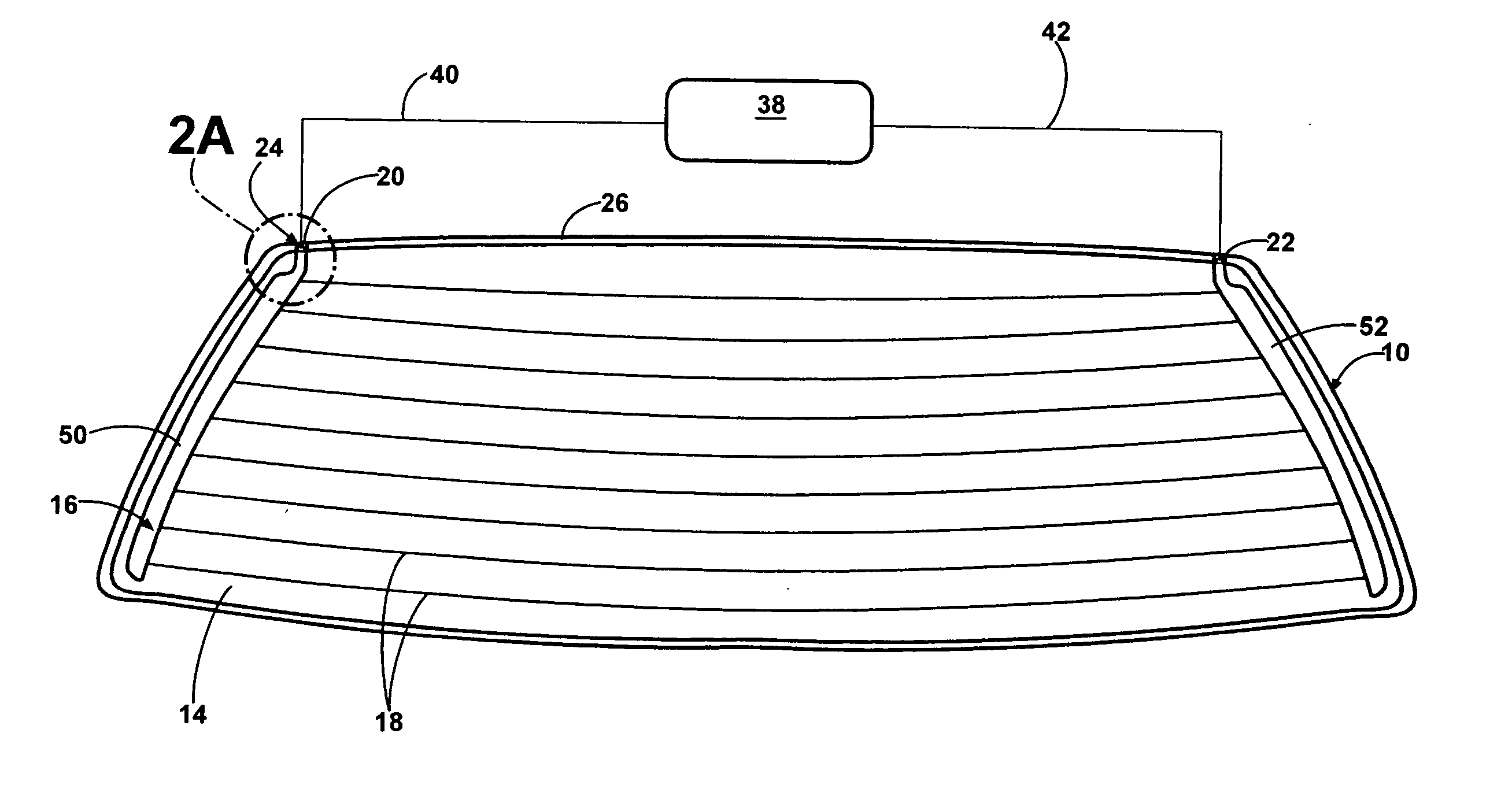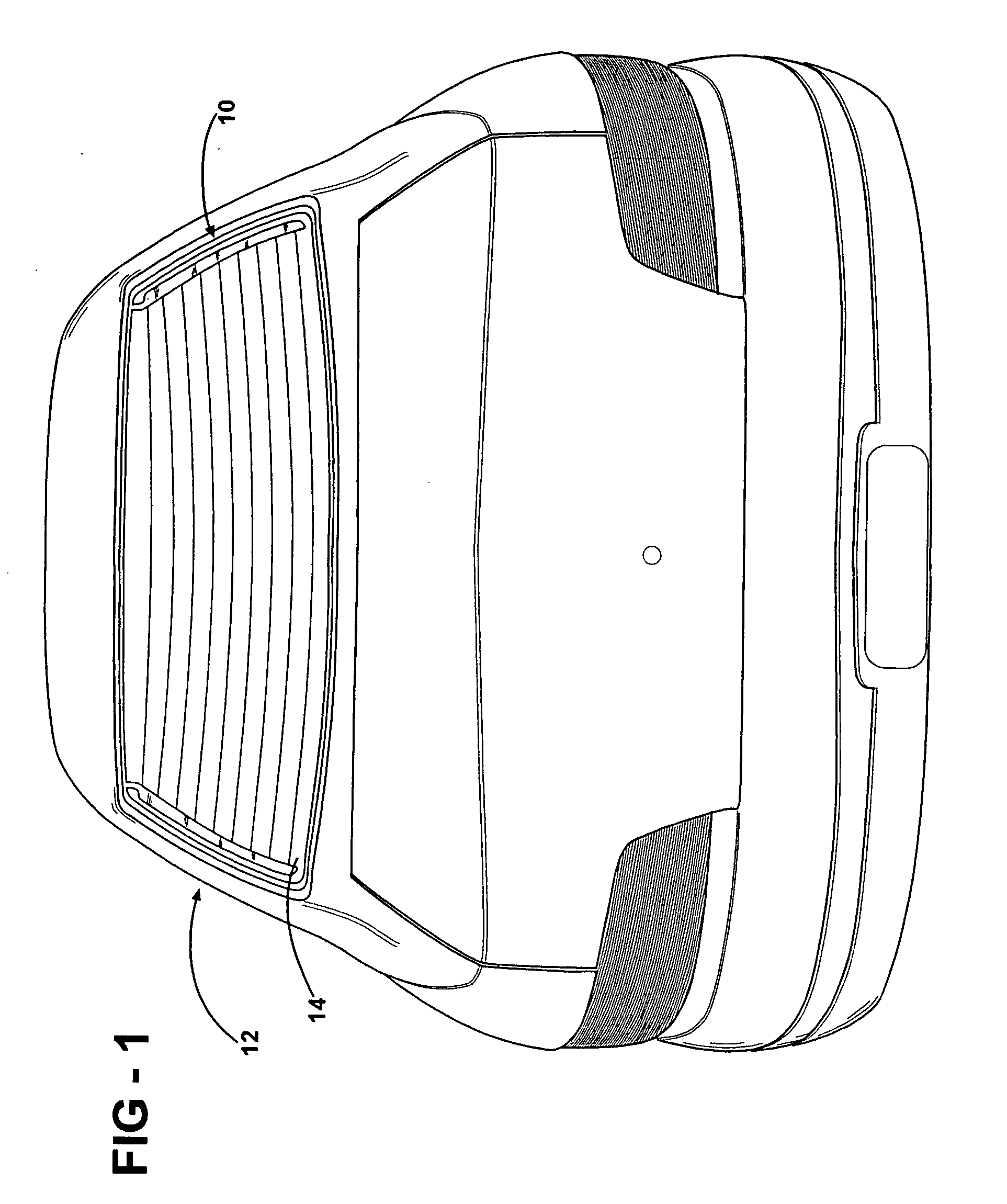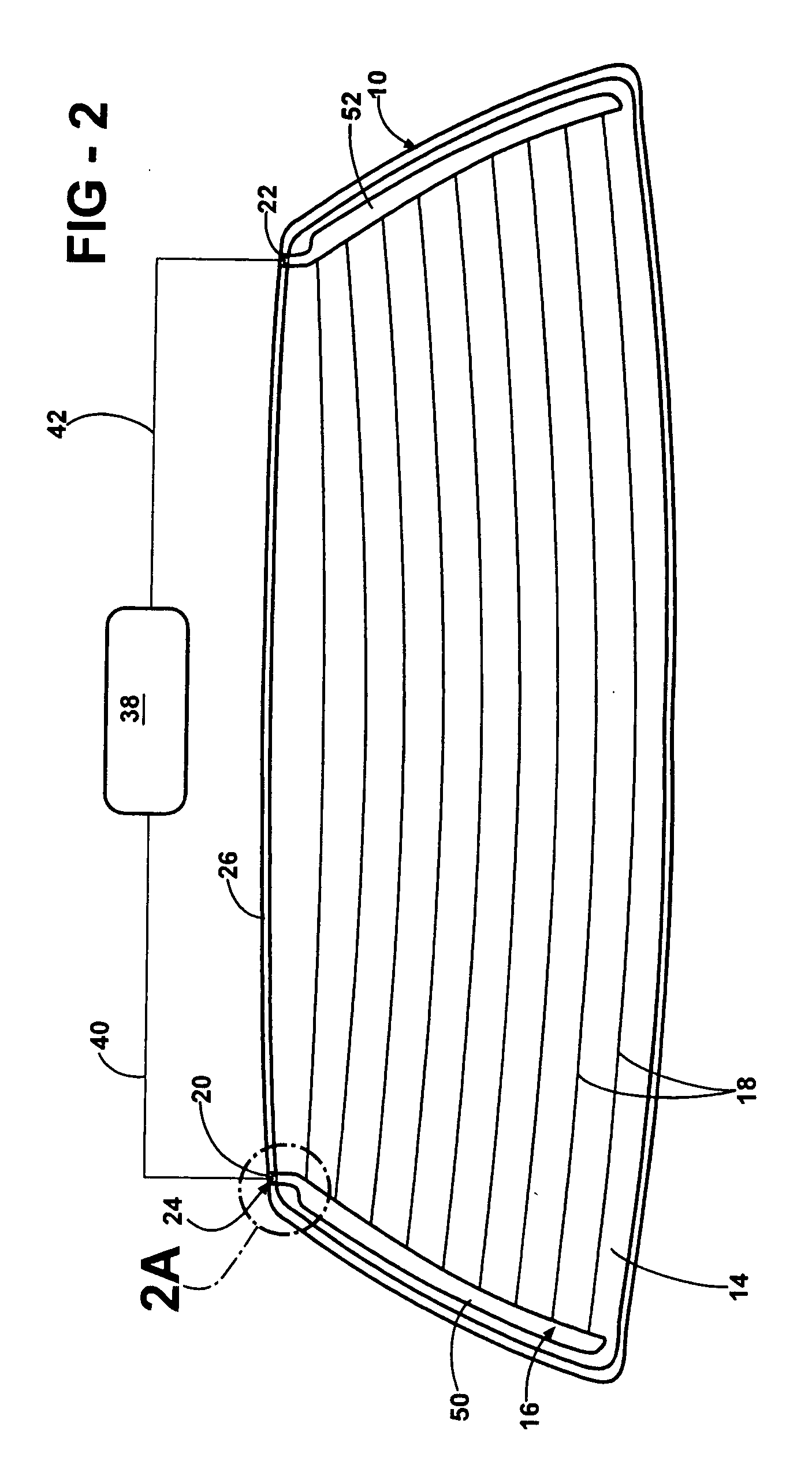Electrical connector for a window pane of a vehicle
a technology for electric connectors and window panes, which is applied in vehicle maintenance, vehicle cleaning, transportation and packaging, etc., can solve the problems of not being immune to mechanical stress, cracking or other damage to substrates, and being considered an environmental contaminant, so as to minimize mechanical stress and resist delamination from the conductor
- Summary
- Abstract
- Description
- Claims
- Application Information
AI Technical Summary
Benefits of technology
Problems solved by technology
Method used
Image
Examples
examples
[0038] Plaques were made including the glass substrate 14, the electrical conductor 16, and the electrical connector 20. The electrical conductor 16 was formed from silver paste for all of the plaques, and the electrical connector 20 was formed from various materials. The glass substrate 14 was formed from soda-lime-silica glass. The plaques were subjected to an elevated temperature to determine which of the materials are suitable for the connector 20. More specifically, the plaques were first heated to a temperature of 250° C. for a period of about 20 minutes to remove residual components in the silver paste. The plaques were then heated to a temperature of about 620° C. for another period of about 20 minutes. The plaques were allowed to cool back down to room temperature of about 21° C. over a period of about 120 minutes. The plaques were observed for visual separation of the connector 20 from the glass substrate 14 and / or the conductor 16 and for visible cracking of the glass sub...
PUM
 Login to View More
Login to View More Abstract
Description
Claims
Application Information
 Login to View More
Login to View More - R&D
- Intellectual Property
- Life Sciences
- Materials
- Tech Scout
- Unparalleled Data Quality
- Higher Quality Content
- 60% Fewer Hallucinations
Browse by: Latest US Patents, China's latest patents, Technical Efficacy Thesaurus, Application Domain, Technology Topic, Popular Technical Reports.
© 2025 PatSnap. All rights reserved.Legal|Privacy policy|Modern Slavery Act Transparency Statement|Sitemap|About US| Contact US: help@patsnap.com



